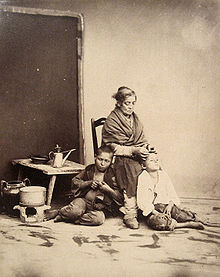 |
| Photo of a mother picking the nits off of her child. |
 |
| P. humanus capitis |
 |
| P. humanus humanus |
This species of lice is of course an animal belonging in the class Insecta under the phylum Arthropoda. It belongs in the order Phthiraptera with over 3,000 other species of lice. All members of this order are wingless ectoparasites of many different types of birds and mammals. Most lice are scavengers, feeding on dead skin and other debris, but P. humanus is one of the species that takes blood meals. There are four suborders currently recognized under order Phthiraptera: Anoplura (sucking lice found only on mammals), Rhyncothirina (found on elephants and warthogs), Ischnocera (chewing lice that parasitize mostly birds, save for one family that is found on mammals), and Amblycera (more chewing lice that parasitize mostly birds, but are found on some South American and Austrailian mammals). P. humanus belongs to suborder Anoplura. It belongs in family Pediculidae. The two subspecies of P. humanus will interbreed under lab conditions, but they do not interbreed in nature as they occupy very different niches on their hosts.
 |
| Copulation in P. humanus humanus (Female on top) |
Life Cycle
The life cycle for Pediculus humanus involves three distinct stages. The eggs, or "nits", are laid on either the bases of hairs on the head (as in P. humanus capitis) or on the seams of clothing, particularly around the waistline or armpit areas of clothing (as in P. humanus humanus). After a week or two, the nits hatch and release little nymphs. These nymphs look identical to adults except that they lack mature genitals and are smaller in size. The nymphs feed on the host's blood. They nymphs will undergo 3 molts before maturing into adults after 9-12 days. As adults, they will mate and reproduce. As adults, the lice continue to live on blood meals from the host. If they become separated from the host, or if the host dies, the lice will die after a short while living at room temperature.
Pediculosis (Being infected with lice.)
 |
| Nits of P. humanus capitis |
Head lice are not known to carry any diseases, but do cause itchy scalps. Head lice are often found in children and spread quickly in schools and daycares. Head lice are able to live for about two
days off of their host in things like hats, hairbrushes, and pillows.
 |
| Nits of P. humanus humanus |
The treatment for pediculosis includes an improvement in living conditions, the use of pediculocidal shampoos and lice combs, washing or burning of infected clothing and bedding, and regular bathing.
The Moral of the Story
Keep yourself clean, wash your cloths, and don't share hats with children or homeless people. :p Being aware of how these animals live is half the battle with preventing or treating their infestations.



No comments:
Post a Comment